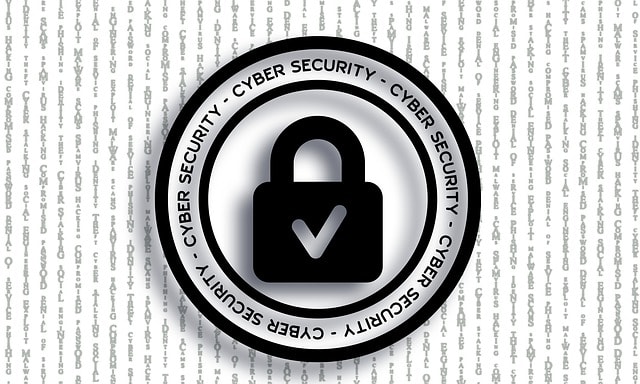Nowadays, with more businesses taking their businesses online, cybersecurity incidents have become a common threat. These incidents, ranging from data breaches to malware attacks, can have severe repercussions if not handled effectively. That’s why having an incident response plan can help your business mitigate risks, minimize damages, and ensure business continuity.
Read on to learn more about incident response planning, and how to go about creating and implementing an effective incident response plan.
What Is Incident Response Planning?
Incident response planning is a structured approach designed to manage and address security incidents promptly and effectively. It involves a coordinated effort from the incident response team to identify, contain, eradicate, and recover from security breaches or cyber threats.
Understanding Cybersecurity Emergencies
Cybersecurity emergencies encompass a wide range of threats that businesses may encounter, and include the following:
-
Data Breaches: These occur when unauthorized parties gain access to sensitive information, such as customer data, intellectual property, or financial records. Data breaches can lead to financial losses, regulatory penalties, and damage to reputation.
-
Malware Attacks: Malicious software designed to disrupt operations, steal data, or gain unauthorized access to systems is used by cybercriminals against you. Common types of malware include viruses, ransomware, and spyware, posing significant risks to organizational cybersecurity.
-
Phishing Incidents: Phishing attacks use deceptive emails, messages, or websites to trick individuals into divulging sensitive information or clicking on malicious links. These incidents can result in data breaches, identity theft, and financial fraud.
Apart from financial losses and regulatory fines, businesses may face operational disruptions, legal liabilities, and loss of customer trust in the wake of cybersecurity emergencies. Therefore, proactive measures and a well-defined incident response plan can help to lessen these risks effectively.
Key Components of an Incident Response Plan
An effective incident response plan comprises several key components:
Preparation
Conduct risk assessments, establish policies and procedures, and implement security controls to prepare for potential incidents.
Detection
Utilize monitoring tools, intrusion detection systems (IDS), and security alerts to detect security incidents the moment they happen.
Containment
Isolate affected systems or networks to prevent further spread of the incident and minimize impact.
Eradication
Identify and remove the root cause of the incident, such as malware or unauthorized access, from the affected systems.
Recovery
Restore affected systems, data, and services to normal operations while ensuring the integrity and security of the restored environment.
Lessons Learned
Conduct post-incident reviews and analyses to identify strengths, weaknesses, and areas for improvement in the incident response process.
Developing Your Incident Response Plan
Creating a comprehensive incident response plan involves several critical steps. The first is risk assessment, where you want to identify potential threats, vulnerabilities, and impact scenarios to prioritize response efforts and allocate resources effectively. Next comes setting up the incident response team. Clear roles, responsibilities, and escalation procedures for the incident response team should be set, including communication protocols and decision-making processes to be used.
Once the incident response team is ready to go, establish communication channels and procedures for internal stakeholders, external partners, regulatory authorities, and customers during a security incident. Communication is key during incidents to keep everyone informed and in the loop. Next, implement security tools such as security information and event management (SIEM) systems, endpoint detection and response (EDR) solutions, and incident response platforms to facilitate incident detection, analysis, and response.
The final step of any incident response plan should put a clear focus on training and awareness. Provide regular training and exercises to better educate your employees. This allows them to feel prepared and more capable of responding to an actual incident, which leads to effective incident response plans in general.
Tailoring the incident response plan to fit the specific needs, industry requirements, and organizational structure is the key to its effectiveness. Consider factors such as regulatory compliance, industry best practices, and available resources when developing and refining the plan.
Implementing the Incident Response Plan
You have your incident response plan—now what? It needs to be deployed and tested to validate its effectiveness and readiness. When implementing the plan, remember these key steps:
-
Plan Deployment: Distribute the incident response plan to all relevant stakeholders, including the incident response team, IT personnel, executives, and department heads.
-
Training and Drills: Conduct regular training sessions and simulated drills to test the incident response procedures, evaluate team readiness, and identify areas for improvement.
-
Incident Response Tools: Ensure that monitoring tools, communication systems, and response mechanisms are functional and accessible during an incident.
-
Documentation and Reporting: Maintain detailed documentation of incident response activities, including timelines, actions taken, evidence collected, and outcomes, for post-incident analysis and regulatory compliance.
Testing once and never touching again is a recipe for disaster. Continuous monitoring, evaluation, and refinement of the incident response plan lets you adapt to evolving threats, technological advancements, and organizational changes.
Responding to Cybersecurity Incidents
During a cybersecurity incident, the response process typically involves four different phases. In the detection phase, you detect and verify the occurrence of a security incident through monitoring, alerts, or user reports. This leads to the isolation phase, where affected systems, networks, or assets are isolated to prevent the further spread of the incident and minimize the impact on unaffected areas. Identifying and removing the root cause of the incident, such as malware or unauthorized access, from the affected systems or environments then takes place.
Once the eradication phase is complete, the recovery phase begins, where the affected systems, data, and services are restored to normal operations while ensuring data integrity, system security, and regulatory compliance.
Throughout the incident response process, effective communication, collaboration, and coordination are essential. Key actions during incident response include the following:
-
Preserving Evidence: Collect and preserve digital evidence, logs, and forensic data for investigation, legal purposes, and regulatory compliance.
-
Communication: Notify relevant stakeholders, including internal teams, executives, legal counsel, regulatory authorities, customers, and vendors, about the incident, its impact, and ongoing response efforts.
-
Mitigation: Use mitigation measures, such as applying security patches, updating antivirus definitions, and implementing access controls, to prevent further exploitation or recurrence of the incident.
-
Recovery and Restoration: Restore affected systems, data, and services from backups or secure sources to resume normal operations and minimize downtime.
-
Monitoring and Follow-Up: Continuously monitor systems, networks, and activities for signs of ongoing threats, conduct follow-up investigations, and perform post-incident analysis to identify lessons learned and areas for improvement.
Want an incident plan that you can feel secure about? The team at CMIT Solutions I-270 Corridor can help. Contact us today to learn more about our services!





